The primary purpose of market research is to furnish businesses with pertinent insights about consumer behaviors, market dynamics, and competitor strategies. Yet, these insights gain relevance only when they catalyze effective action. Many organizations face challenges in relaying these research outcomes to internal teams, such as stakeholders, sales units, or product design groups, ultimately leading to inertia and missed potential. So, upon garnering these insights, how should they be disseminated?
Why Sharing Research Outcomes Internally is Crucial
Without internal dissemination, market research can quickly become a sunk cost – a significant expenditure of time, effort, and resources with little to show in return. Data, when trapped in silos, loses its potential to inform and activate.
The essence of internal dissemination isn’t just about relaying information. It’s about ensuring the lifeblood of research flows freely, touching every part of the organization, informing strategies, and influencing decisions. It’s about preventing the grave error of letting valuable insights languish unnoticed or underutilized.
When research findings are disseminated across the organizational matrix, they become more than just data points. They shape perspectives, challenge assumptions, and become catalysts for innovation. They shed light on market nuances, evolving consumer aspirations, product modifications, and looming competitive hurdles. Sharing these insights not only sheds light on unseen opportunities but also instills a culture where decisions are rooted in empirical evidence, not just intuition or hearsay.
By avoiding data silos and championing transparency, businesses can maximize the return on their research investment, ensuring insights become the driving force behind impactful, informed actions.
Recognizing Your Internal Stakeholders
No two teams within an organization perceive data in the same light. The challenge isn’t just in delivering research outcomes, but in packaging them to resonate with varied internal audiences. Recognizing these distinctions is akin to decoding the language of your own organization.
Leadership might peer into data, seeking overarching themes and fiscal ramifications. In contrast, marketing personnel might look deeper, fishing for nuanced consumer trends and preferences. Serving each segment with customized narratives ensures not only comprehension, but genuine engagement. After all, for insights to inspire action, they first must inspire intrigue.
Fostering Agreement and Facilitating Initiatives
A compelling narrative is only the beginning. It sets the stage, but the true play begins when there’s alignment in vision and direction. Data can suggest a path, but it takes collective will to tread upon it.
Crafting a shared vision post-research involves more than just presentations. It’s about fostering environments conducive to dialogue, debate, and ideation. Whether through brainstorming assemblies or immersive workshops, the aim is to transform static data into dynamic discussions. The more involved stakeholders are in dissecting and discussing findings, the more vested they become in the subsequent steps. A unified front, addressing reservations and celebrating revelations, ensures the organization moves with purpose, turning insights into orchestrated action.
Translating Data into Tangible Steps
The art of internalizing market research is like alchemy—transforming raw data into actionable gold. It’s about ensuring the organization doesn’t just ‘know’ but ‘acts’, turning the theoretical into the practical.
Efficiently disseminating research findings primes an organization to make evidence-informed leaps, whether refining promotional blueprints, innovating product designs, or sculpting memorable customer journeys. In our fast-paced, competitive milieu, leveraging insights isn’t a mere advantage; it’s the cornerstone of progress.
The final aim remains unwavering: to morph insights into initiatives that amplify both organizational stature and customer satisfaction. It’s a continuous journey of learning, sharing, and evolving, ensuring every piece of research yields tangible, transformative results.


